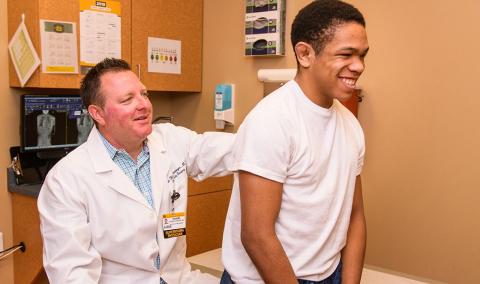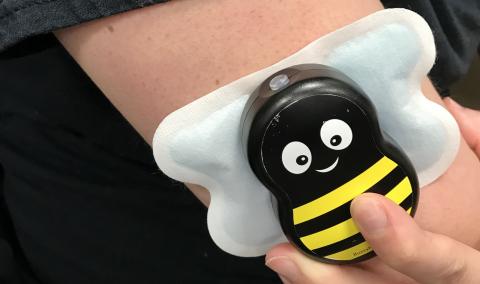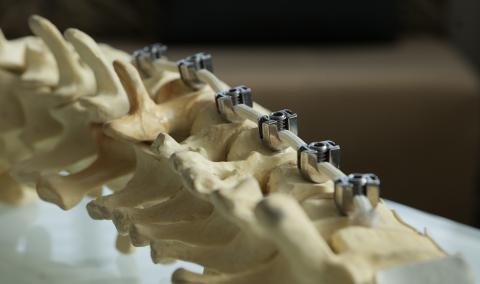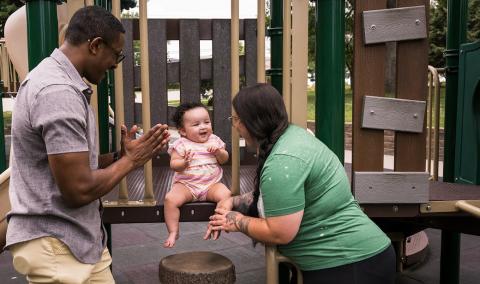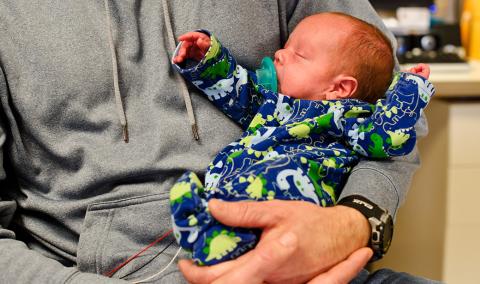Skeletal dysplasia, often referred to as dwarfism, includes a group of genetic disorders that affect a child's bone and cartilage growth. These disorders, characterized by short stature and other physical differences, are frequently associated with a range of orthopaedic problems.
Many children with skeletal dysplasia have a variety of medical and social concerns that cannot adequately be addressed by single visits with a pediatrician or internist. University of Missouri Health Care is the region's leader in treating skeletal dysplasia disorders. Our experts are actively involved in national research, and the leader of our team, Daniel Hoernschemeyer, MD, is a member of the Little People of America medical advisory board so he can be actively involved with the issues affecting the health of skeletal dysplasia patients.
To meet your child’s more complex needs requires ongoing coordinated treatment. Our team approach provides a forum for diagnosis, prevention and treatment. Most children who take part in our Skeletal Dysplasia Program are seen on a regular basis, depending on individual needs.
What is skeletal dysplasia?
Skeletal dysplasia, the medical term for dwarfism, includes many conditions that affect bone and cartilage growth. Children born with skeletal dysplasia will have differences in the size and shape of their legs, arms, trunk and/or head. They will be short in stature and might also have arms and legs that aren’t proportional with their body. Skeletal dysplasia is a genetic condition. Although rates vary by specific condition, generally skeletal dysplasia affects close to one in every 4,000 to 5,000 births.
Skeletal dysplasia diagnosis
Diagnosis can be done during fetal development — after 22 weeks gestation. The presence of short limbs can be detected via ultrasound, but a diagnosis is confirmed by testing the fetal DNA using amniocentesis. For those not diagnosed at birth, skeletal dysplasia experts can use clinical and radiologic evaluation to diagnose. If a diagnosis is still in doubt after clinical and radiographic evaluations, genetic testing might be needed.
Skeletal dysplasia treatment
There is no cure for skeletal dysplasia. Treatments generally aim to mitigate complications of the disorder. Limb-lengthening surgery should only be discussed when the patient is old enough to weigh the risks and benefits. Adaptability products can help people with daily tasks such as hygiene, driving and reaching household items. Curvature of the spine can be treated with a brace or, less frequently, with spinal fusion surgery. Shoe lifts or inserts can address leg-length discrepancies. Surgery might be necessary to address leg alignment problems.
Types of skeletal dysplasia
Achondroplasia
Achondroplasia is the most common type of skeletal dysplasia, affecting approximately one in every 25,000 people. It is a form of disproportionate dwarfism that can be diagnosed during fetal development. People with achondroplasia have shortened limbs, an enlarged head and bowed legs. The mean adult high is 4-foot-3 for men and 4-1 for women. Children with the achondroplasia have hyperlordosis — an inward curve of the spine in the lower back — and commonly suffer from joint instability and elbows that cannot fully extend. Learn more: Achondroplasia
Campomelic dysplasia
Campomelic dysplasia is a rare form of bent-bone skeletal dysplasia that affects an estimated 1 in 40,000-200,000 people. It is complicated by breathing issues and has therefore historically been considered a lethal disease, with most individuals not surviving past infancy. With proper medical care and guidance, campomelic dysplasia can be managed. Learn more: campomelic dysplasia
Cartilage-hair hypoplasia
Cartilage-hair hypoplasia — otherwise known as Metaphyseal chondrodysplasia, McKusick type — is a disproportionate form of dwarfism that affects an estimated 1 in 200,000 births. Despite its name, cartilage-hair hypoplasia (CHH) affects many body systems, particularly the immune system. Treatment of symptoms might include monitoring and surgery performed by doctors who specialize in skeletal dysplasia. Learn more: cartilage-hair hypoplasia
Diastrophic dysplasia
Diastrophic dysplasia is a disorder of cartilage and bone development that is estimated to affect about 1 in 100,000 births. Affected individuals have short stature with very short arms and legs. Most also have early-onset joint pain (osteoarthritis) and joint deformities (contractures), which restrict movement. Learn more: diastrophic dysplasia
Ellis van Creveld syndrome
Ellis van Creveld syndrome (EVC) is a rare form of skeletal dysplasia that effects approximately 1 in 150,000 people. Treatment might include monitoring and surgery by doctors who specialize in skeletal dysplasia. Learn more: Ellis van Creveld syndrome
Hypochondroplasia
Hypochondroplasia is a form of dwarfism estimated to affect 1 in every 15,000 to 40,000 newborns. Children with hypochondroplasia often experience slow growth after age 3, with disproportionally small arms and legs. Hearing loss is also a common problem. Learn more: hypochondroplasia
Multiple epiphyseal dysplasia
Multiple epiphyseal dysplasia (MED) is a general term for a group of disorders characterized by abnormal development of the bone and cartilage of the epiphyses, the rounded ends or "heads" of the long bones. There are two types of multiple epiphyseal dysplasia. Both the dominant and recessive types have relatively mild signs and symptoms, and most people with MED are of normal height or slightly below normal height. Learn more: multiple epiphyseal dysplasia
Pseudoachondroplasia
Pseudoachondroplasia is a form of dwarfism estimated to affect 1 in 30,000 people. Children aren’t usually diagnosed at birth, but characteristics usually become noticeable from 2 to 4 years of age. Learn more: pseudoachondroplasia
Spondyloepiphyseal dysplasia
Spondyloepiphyseal dysplasia congenita (SEDC) is a rare genetic disorder characterized by deformities that begin before birth, including skeletal and joint malformations involving the spine, hips and knees and abnormalities affecting the eyes. About 1 in 100,000 newborns are affected. Spondyloepiphyseal dysplasia tarda (SEDT) affects only males, and its symptoms often are not apparent until a child is 6 to 8 years old. Learn more: spondyloepiphyseal dysplasia
Related Conditions & Treatments
- Adolescent Medicine
- Chest Wall Deformities
- Down Syndrome
- Emergency Care for Kids
- Gastrostomy and Feeding Access Program
- Hyperbaric Oxygen Therapy
- Juvenile Diabetes
- Neonatology
- Pediatric Anesthesiology
- Pediatric Cancer
- Pectus Carinatum
- Pectus Excavatum
- Pediatric Cardiology
- Pediatric Dermatology
- Pediatric Development and Behavior
- Pediatric ENT (Ear, Nose and Throat)
- Pediatric Epilepsy
- Pediatric Eye Care
- Pediatric Gastroenterology
- Pediatric Infectious Diseases
- Pediatric Inpatient Rehabilitation
- Pediatric Nephrology
- Pediatric Neurology
- Pediatric Neurosurgery
- Pediatric Orthopaedics
- Pediatric Plastic Surgery
- Pediatric Primary Care
- Pediatric Psychiatry
- Pediatric Pulmonary Medicine
- Pediatric Sleep Medicine
- Pediatric Surgery
- Pediatric Surgical Services
- Pediatric Urology
- Pediatric Vascular Anomalies
- Pediatric Weight Management
- Sickle Cell Disease
- Aerodigestive Program




